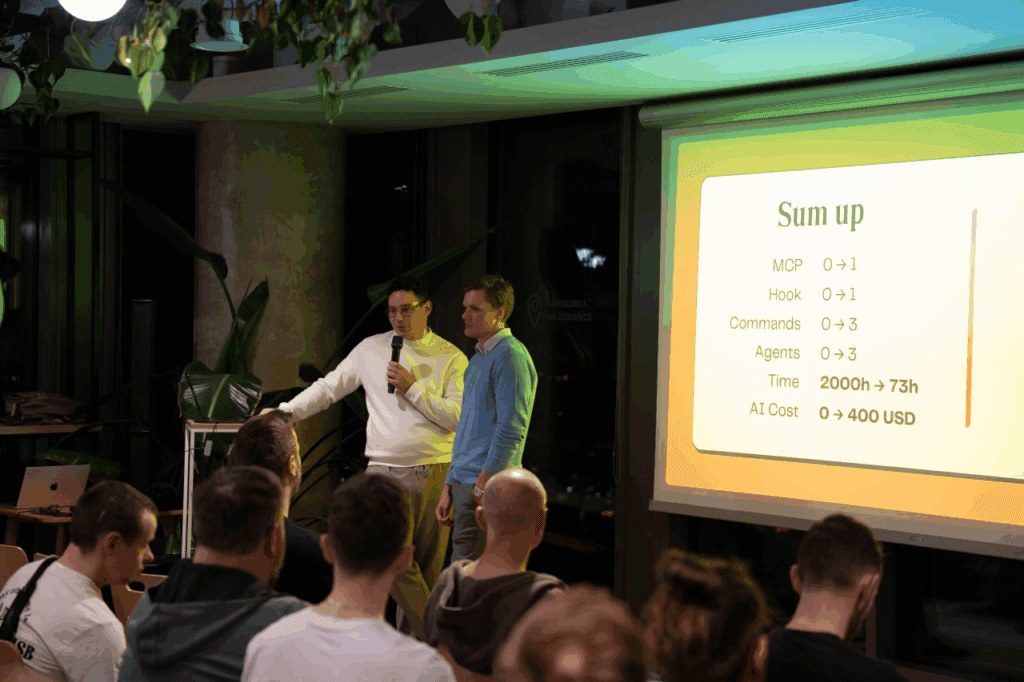n8n + Lovable: A Conversation-Ready AI Prototype in 30 Minutes
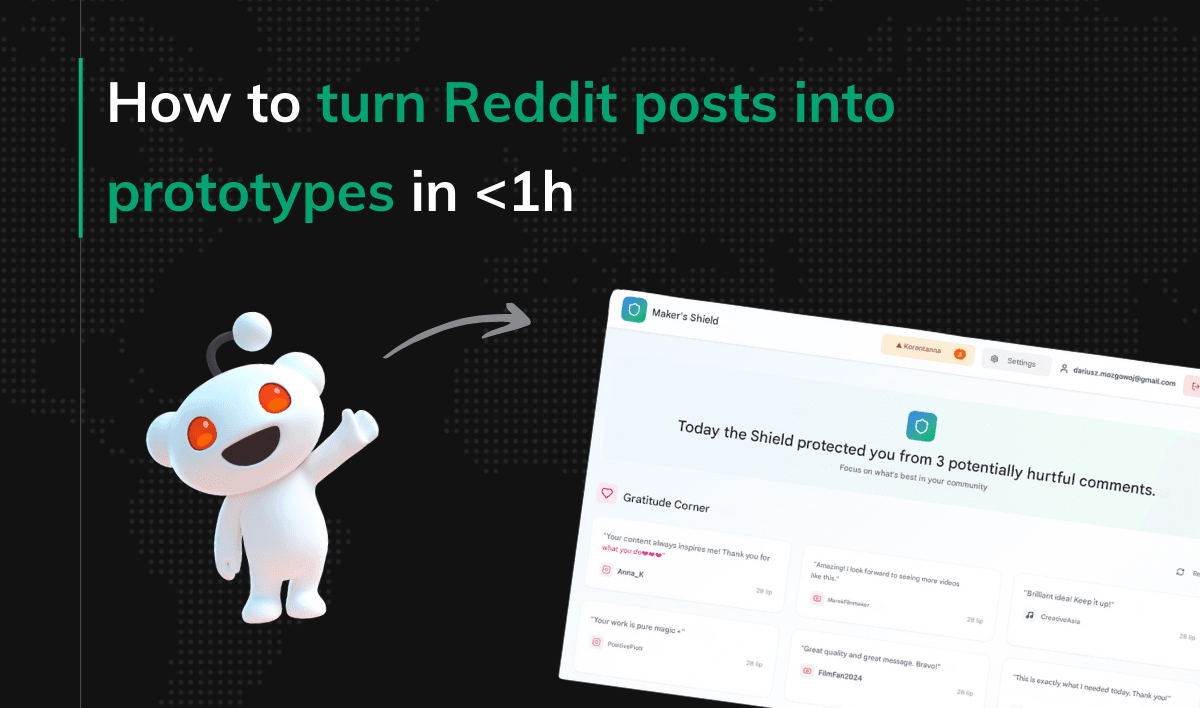
Nothing hurts as much as building a product nobody needs. That’s why I built a system that automatically transforms a real problem found online into a clickable prototype.
But I want to make one thing clear right away – its goal isn’t to definitively validate an idea, but to… instantly create a starting point for a conversation during the solution discovery phase – all this in 30+ minutes, using n8n and Lovable.
Why does early prototyping matter when exploring new product ideas?
At Pragmatic Coders, we place a strong emphasis on early verification. For me personally, the most important thing is that prototypes allow us to make corrections faster and, above all, avoid mistakes that software houses or their clients end up paying for. Prototyp lets us:
- Reduce risk. If you have an idea, it’s a good idea to quickly verify them before you commit.
- Discuss hypotheses. Especially when you’re talking with something tangible like diagrams or ready-made elements, it’s much easier to collaborate and understand the need.
- Gather feedback. Although there’s a risk here, because you can bias the user a bit towards the solution you’re presenting.
The internet, especially Reddit, is a goldmine of problems to be solved. But since I wasn’t going to spend my life looking for information about people’s problems, I automated the whole process.
What tools power this AI-driven prototyping setup?
- n8n: The core automation tool for the entire workflow.
- Reddit: Source of real-world problems described by users.
- Gemini or other AI models: AI model used for the qualification and classification of problems.
- Google Sheets: Simple database for storing qualified problems and triggering the next process.
- Lovable: Low-code AI tool used to generate the clickable prototype from prompts.
- Supabase: Backend to provide logic and data handling for the prototype.
My system, based mainly on n8n and Lovable, works in a few simple steps:
1. Find a Real Problem
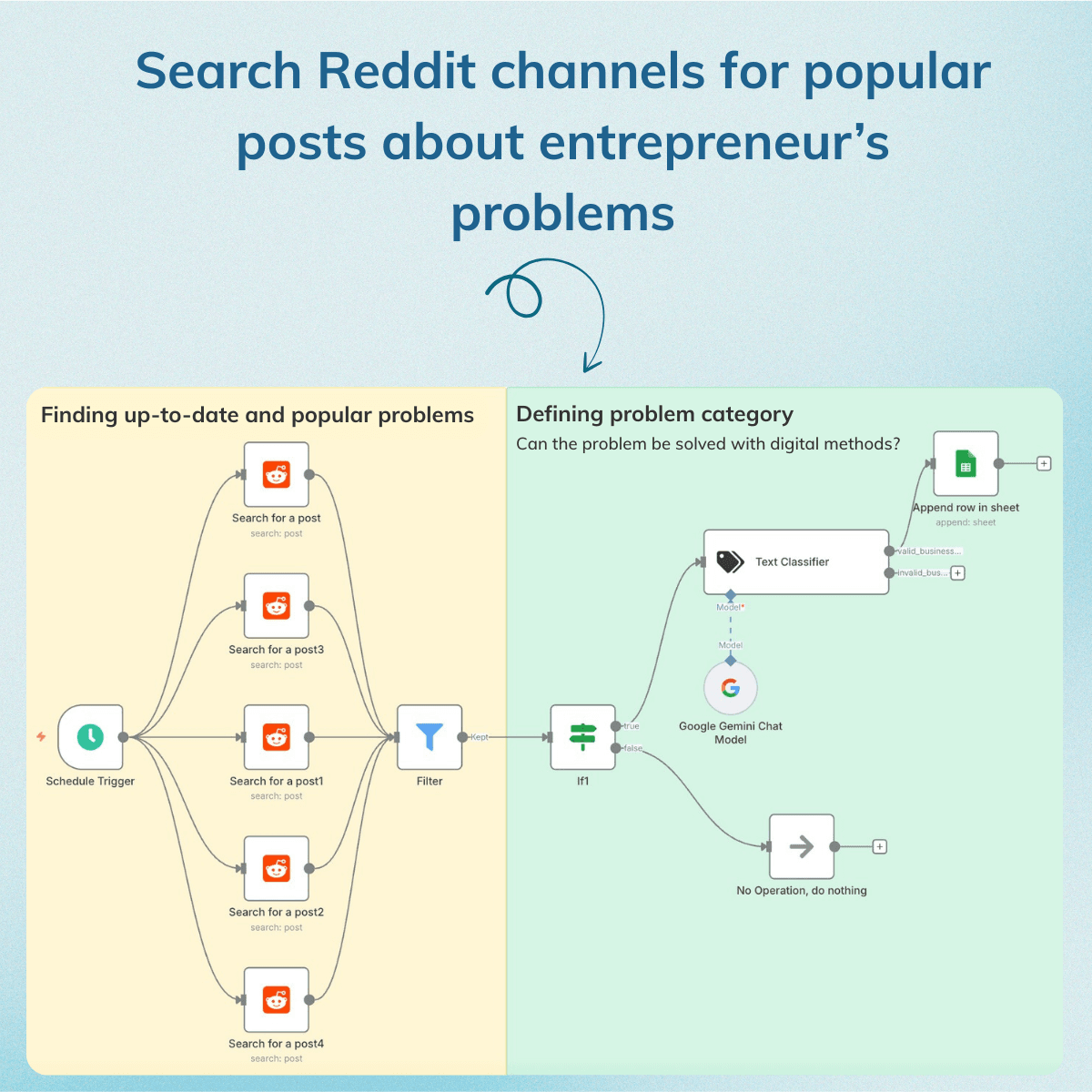
An n8n automation periodically scans popular channels on Reddit, like the r/entrepreneurs subreddit, for posts with keywords such as “how can I do.” The goal is to find topics with high engagement. I’ve set up filters in n8n to catch only the posts that Reddit’s algorithm considers ‘hot’ – for example, those with numerous comments, more than 40 upvotes, and a positive vote ratio of over 85%.
2. AI Qualification
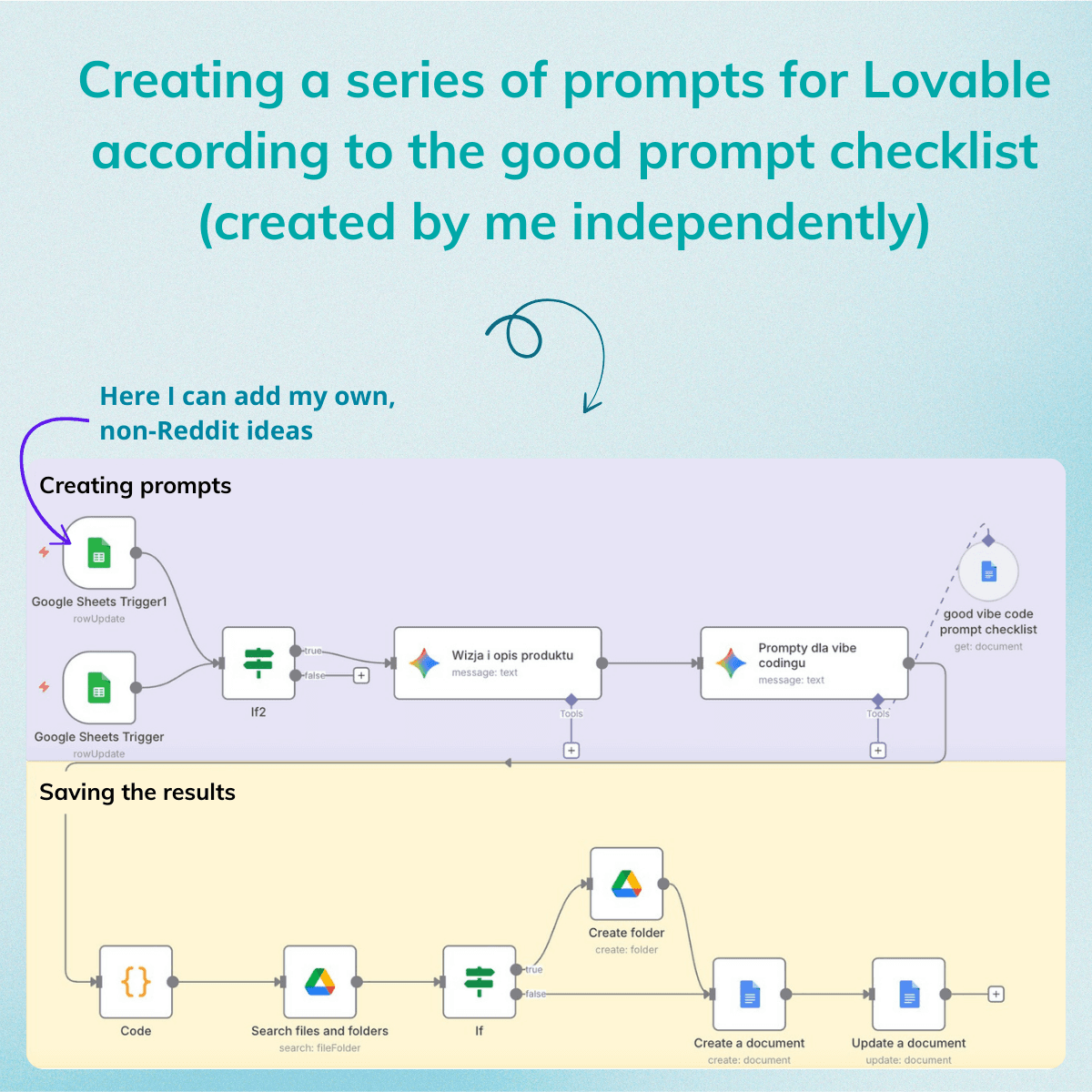
The list of good prompts is based on best practices from the Lovable blog, plus my own two cents from experience.
The captured posts are sent to an AI agent in n8n. Its task is to assess if the problem found there can be solved with digital methods at all. For instance, it filters out posts where someone has a problem with “the tax office because they didn’t pay their taxes” – that’s not something we at Pragmatic Coders can solve. 😉
2.1. Potential Product Description: If the problem passes qualification, another AI agent creates a description (about an A4 page long) containing the product vision and key functionalities.
2.2. Prompt Generation: Based on this, and using my internal checklist, the system generates precise prompts for Lovable. The automation itself decides how many are needed. For one task, it created four, and for another, nine, because it decided that was better.
2.3. My Decision: I read the generated summaries and decide which problems I want to move forward with.
3. Generate Prototype with Lovable
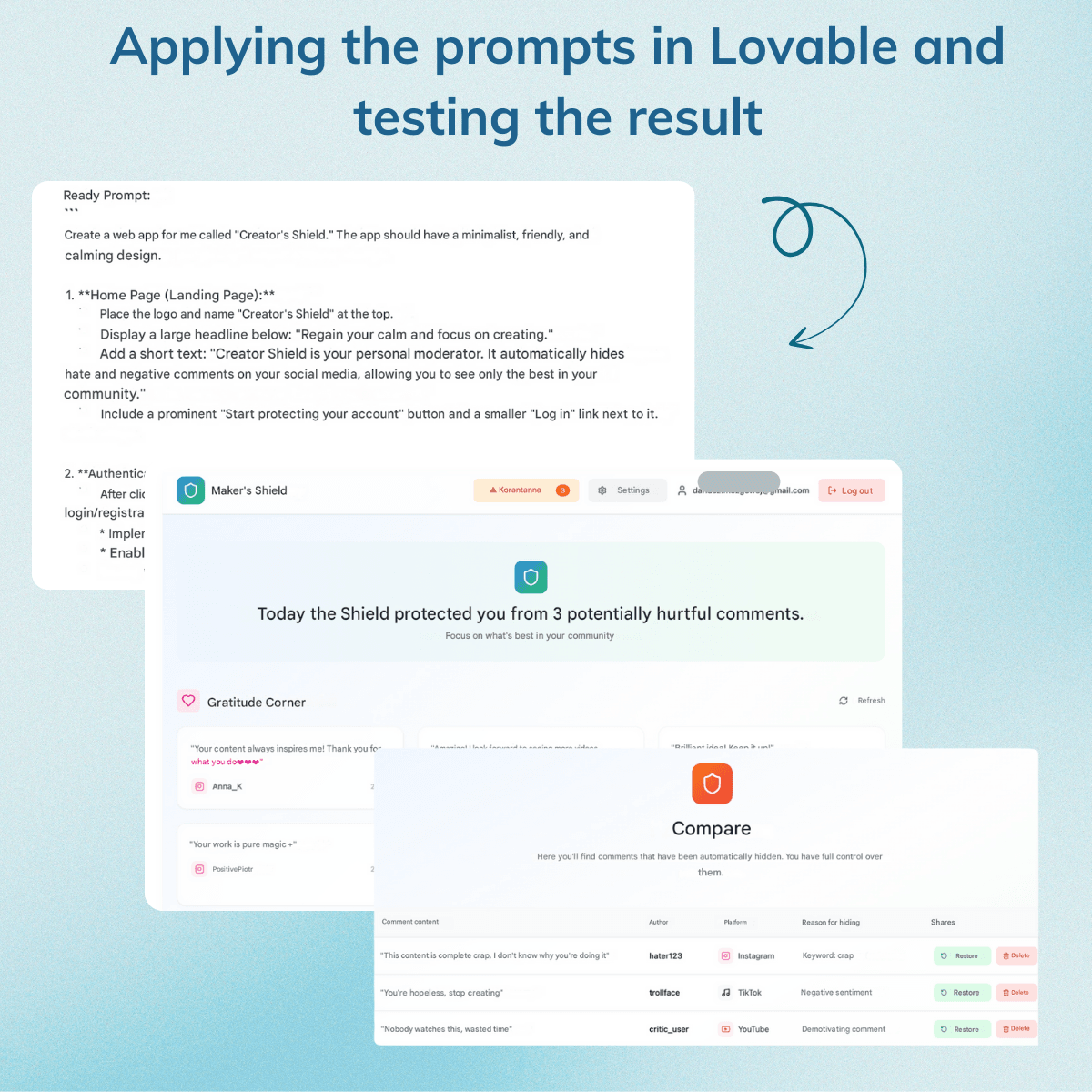
After my approval, I feed the prompts one by one into Lovable. As a result, in less than half an hour, I have a clickable prototype with a basic frontend, ready for further work and connection to a backend via n8n and Supabase.
Example: The “Engage Docs” App
- The Problem: My automation found a post from the owner of a 50-person company who was frustrated because his employees kept returning with the same questions about processes they had already been taught.
- The Solution: The system proposed creating an application called “Engage Docs.” The concept was simple: a platform where every process is documented (e.g., with a short YouTube video), and after reviewing the material, the employee has to confirm they understand it. They confirm they know how to do something, and if they don’t, they watch it again. This would take the load off the boss.
- The Prototype: In about 45-55 minutes, Lovable generated an application skeleton with an admin panel where you can add a course, can delete it, and manage users, as well as an employee panel with a gamification ranking system.
- The Goal and Outcome: The prototype was definitely not perfect. It forgot that something was supposed to be displayed here, or something was clickable, but there was nothing going on underneath. I had to manually add five of my own prompts. But it was the perfect tool to sit down with that owner and ask, “Okay, is this what you had in mind? Could a solution like this solve your problem?Let’s talk about why, in your opinion, your employees aren’t retaining this knowledge.”
Here are the screenshots of the app generated by Lovable:
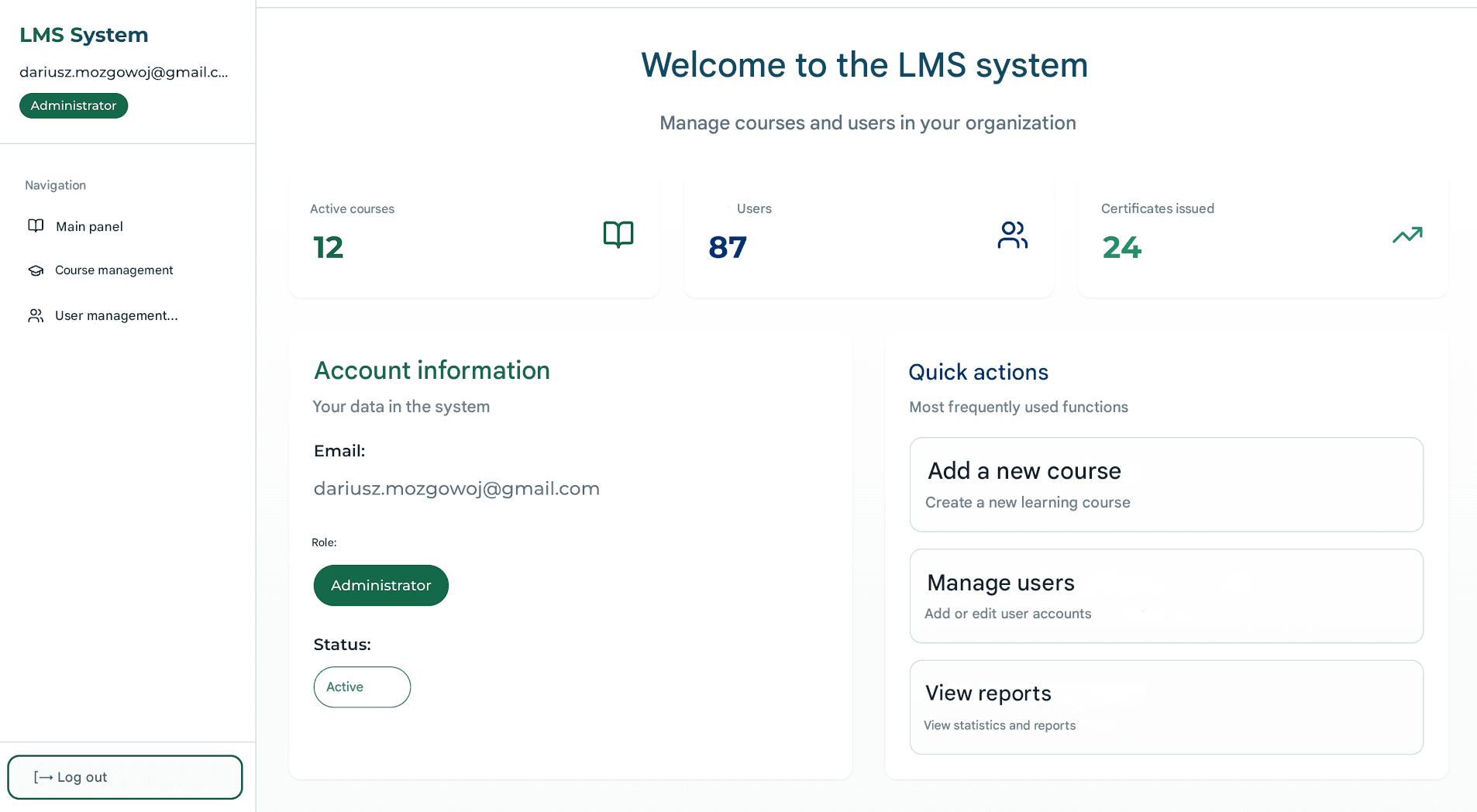
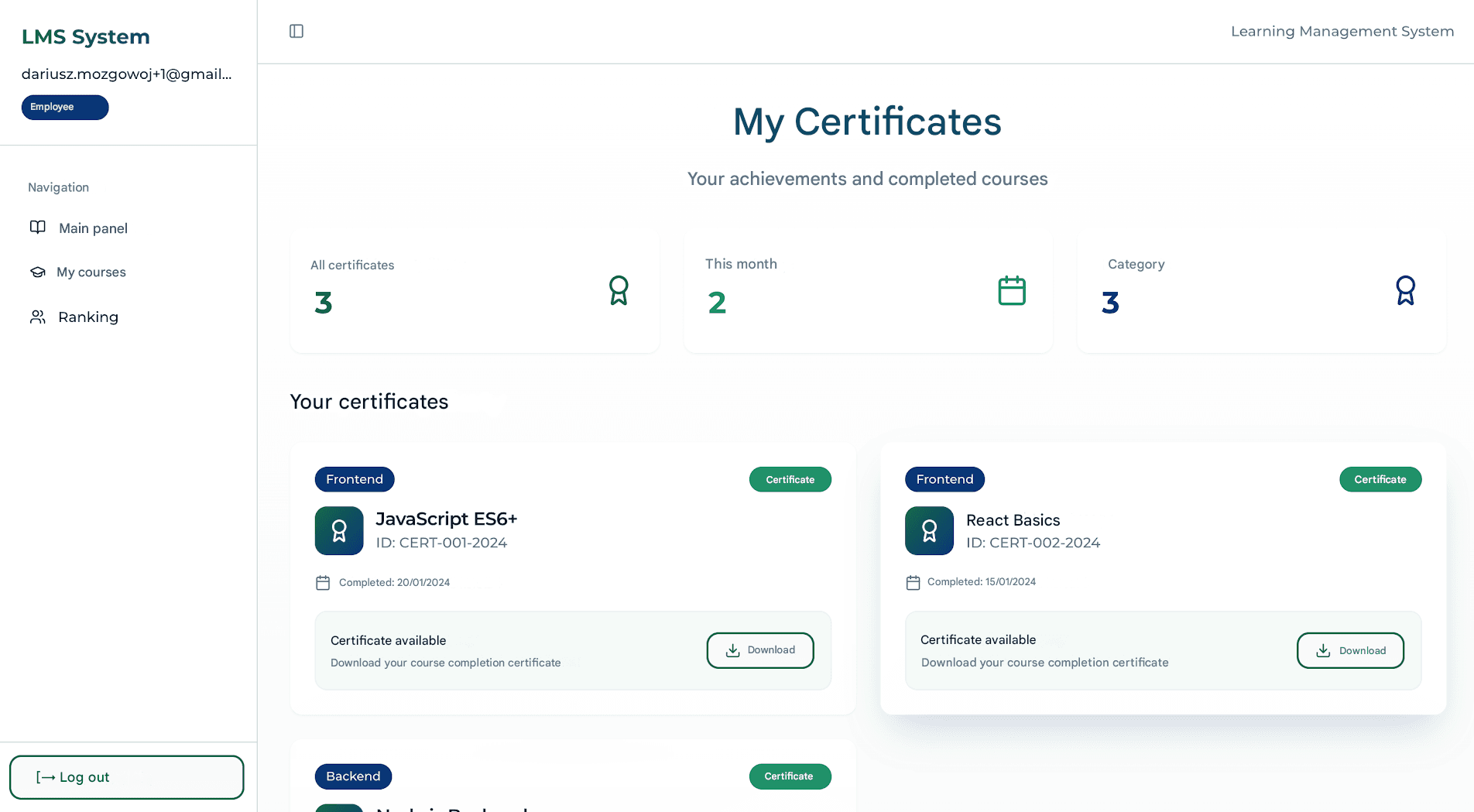
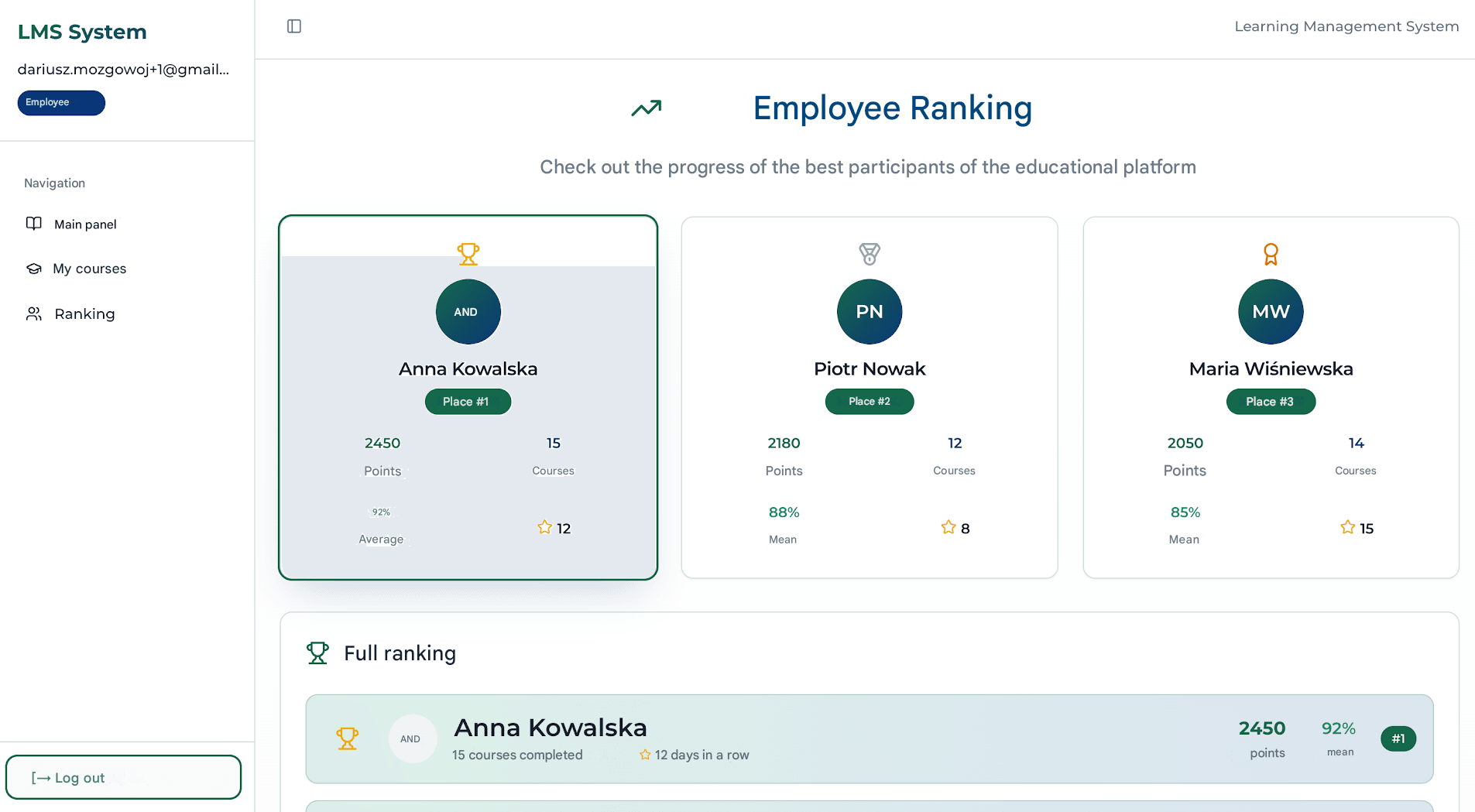
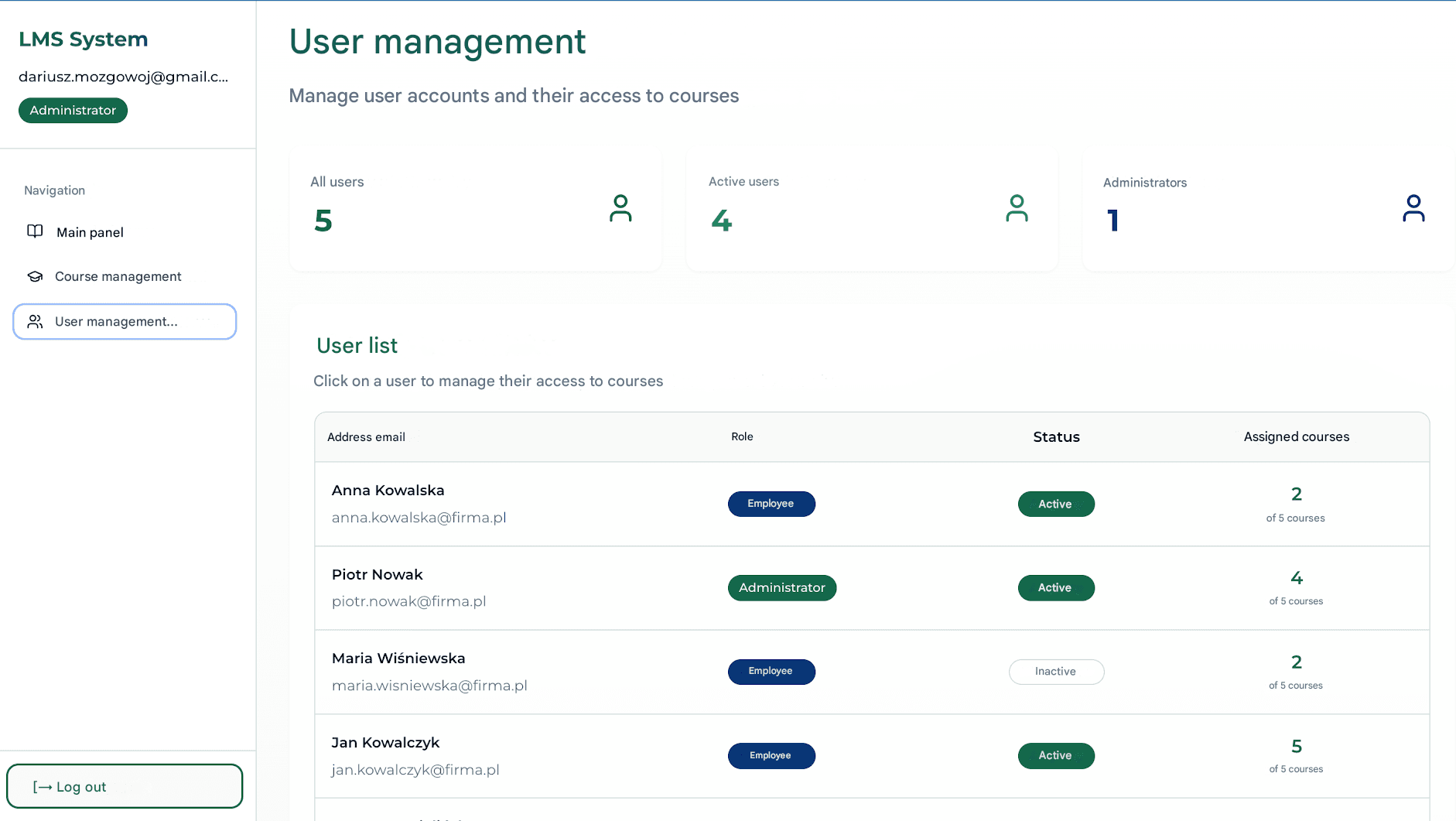
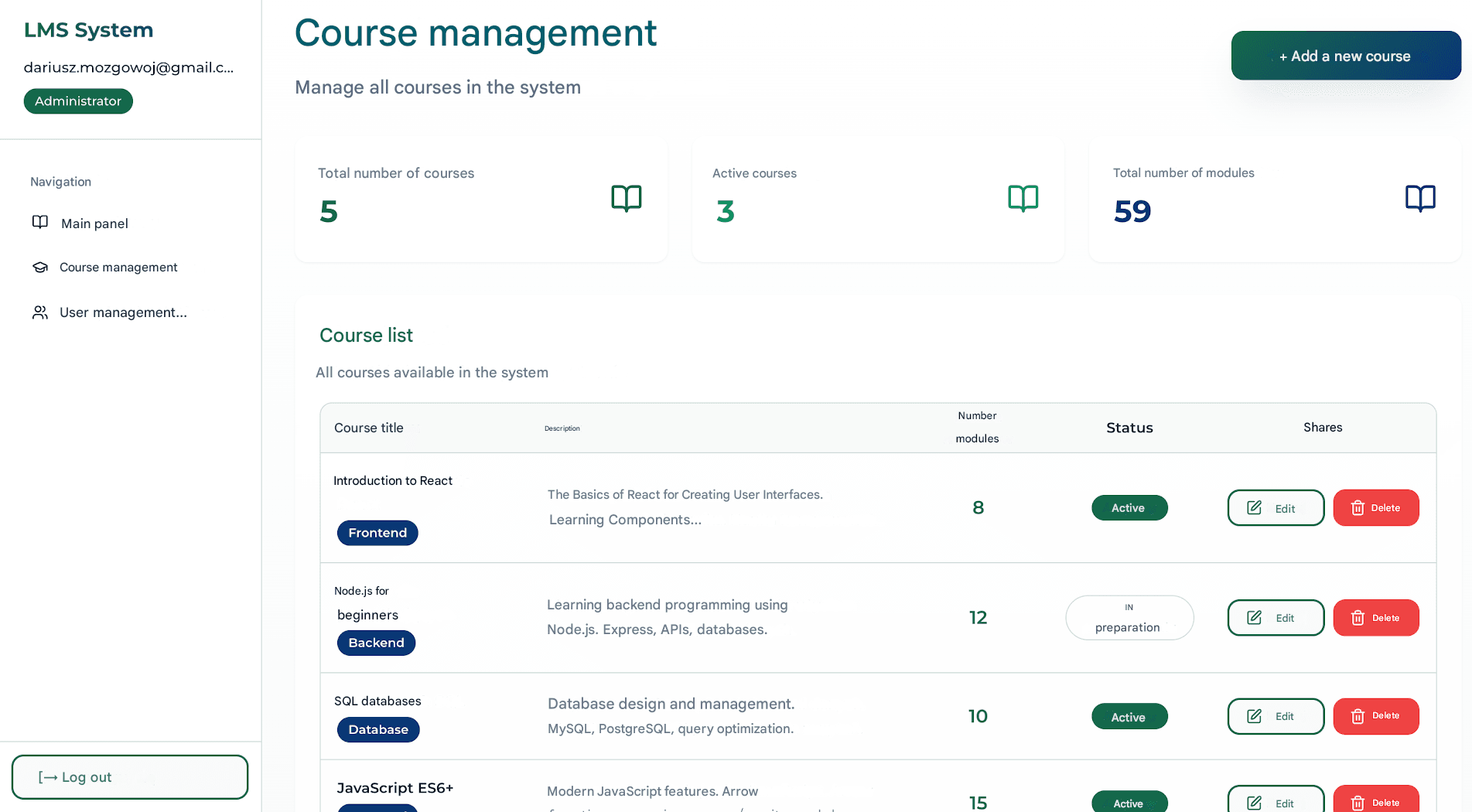
Where do AI prototyping tools like Lovable fall short?
I originally presented this whole idea internally at a Pragmatic Coders “Monday Talk.” There were a lot of questions from the audience that are definitely worth discussing, but these 2 especially caught my interest; they reveal the weaknesses of Lovable, Bolt, and similar tools.
App complexity
What happens when I add a new element and previous ones break?
Well, all tools like Lovable have a problem with high complexity. The more complicated the solution, – the more code, the more elements – the greater the chance that something will go wrong. The problem with AI is that once it “enters” a certain mode of thinking and responding and gets stuck in a loop, it’s just easier to start fresh than to flog a dead horse. That’s why, if something breaks, it’s best to go back to the point where the problem didn’t exist and try again from there.
Long prompts
Is it better to add features iteratively and fix bugs as you go, or to work with a single, large document describing the entire application and generate it “from scratch” in case of errors?
In my experience, at some point, the level of complexity just kills the tools like Lovable or Bolt. them. The main reason is a technical limitation – lack of tokens they can fit into a single prompt. The model loses context when we try to modify something that was created many steps earlier. That’s why I do what was recommended by the creators of Lovable. It turned out that this tool likes very simple and short prompts. So you have to give it a lot of them, so it always has a chance to process it in that context. This seems to work best.
Why Rapid Prototyping Can Be a Threat to Solution Discovery
Just because my system generates a prototype doesn’t mean that application solves the real problem. My colleague Kasia, UX Specialist at Pragmatic Coders, summed this up perfectly during our discussion. She noted that “you’re building a solution without fully understanding the problem.” She stressed that the AI system only sees the reported problem – in this case, from the business owner who says “employees keep bugging me with repetitive questions.” The system can’t discover the real cause of this situation.
And what could the real cause be?
- Maybe the way knowledge is transferred (e.g., orally, in a rush between tasks) is completely ineffective; or
- Maybe the company has a culture where self-reliance isn’t promoted, so it’s easier for employees to just ask than to take responsibility for remembering the process.
From this stems another issue: the objectivity of such a solution. This is what I’m worried about; I don’t want to bias people and make someone understand such a prototype as the solution to the problem, because that was not my intention.
It’s true that no automation will ever uncover the real reasons a problem appears. However, the prototype that I can click together in half an hour is, for me, an opportunity to establish a dialogue which costs me maybe $10.
And again, with this approach, I can go back to the author of the original post and ask, “Hey, does something like this solve your problem?” Instead of weeks, I get feedback in a single day.
Conclusion
I built a tool that allows me to de-risk innovation and make better decisions. I see potential in this solution to increase the synergy between humans and AI” This approach is, for me, the essence of partnership – I don’t wait for orders, but actively search for the best ways to solve real problems, starting with the most important thing: conversation and understanding.
If you could turn any problem into a prototype ready for a conversation in 30 minutes, what problem would it be? Let’s talk.
I used them for one, pragmatic reason: speed. No-code/low-code tools allow me to focus on the process logic and the business problem instead of getting bogged down in server configurations or writing boilerplate code. For creating an automated workflow and generating a simple prototype, they are simply unbeatable. They allow for maximum acceleration of the work in this early, conceptual phase.
Absolutely not. And this is very important. As I mentioned in the article, these tools “buckle” when the level of complexity increases. They have their limitations, such as token limits in AI models, which make it impossible to work on large-scale systems. This process is for rapidly creating prototypes that serve as a starting point for a conversation. The final, scalable, and secure product must then be built by a professional development team.
The goal is to minimize both. The time from finding a problem to having a clickable prototype is, as the title suggests, about 30-60 minutes. As for the cost, it’s negligible. It’s based on AI token consumption and tool subscriptions, but as I mentioned, the cost of creating one of the prototypes was around $10. That’s a negligible price for the ability to de-risk an idea whose development could have cost tens of thousands
On the contrary—it enhances their roles. This system doesn’t replace human intuition or strategic thinking.Why did you use no-code/low-code tools like n8n and Lovable to build this system?
Is this process suitable for building large and complex products?
What is the real cost and time investment of this n8n/Lovable approach?
Doesn't an automated AI system like this diminish the role of developers or product managers?







